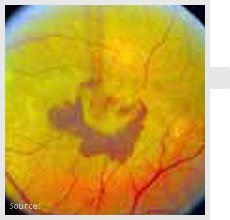Novel mouse model for AMD

AMD mouse model: Mediation of macrophages
The study and treatment of age related macular degeneration (AMD), a leading cause of blindness has been hampered by a lack of animal models. We have reported that mice deficient either in monocyte chemoattractant protein-1 (Ccl-2) or its cognate receptor Ccr-2 develop cardinal features of AMD including accumulation of lipofuscin in and drusen beneath the retinal pigment epithelium (RPE), photoreceptor atrophy and choroidal neovascularisation. Complement and IgG deposition in RPE and choroid accompanies senescene in this model, as in human AMD.
RPE or choroidal endothelium production of Ccl-2 induced by complement C5a and IgG may mediate choroidal macrophage infiltration into aged wild type choroids. Wild type choroidal macrophages degrade C5 and IgG in eye sections of Ccl2 KO or Ccr2 KO mice. Impaired macrophage recruitment may allow accumulation of C5a and IgG which induces VEGF production by RPE, possibly mediating development of CNV. These models implicate macrophage dysfunction in AMD pathogenesis and may be useful as a platform for validating therapies. We have also developed laser injury mouse model that captures some features of AMD and is being used as a preclinical tool for testing pluripotency of stem cells and novel drugs.

